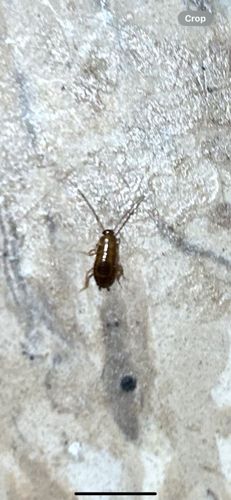German Cockroach Nymph
Scientific Name: Blattella germanica (nymph)
Order & Family: Blattodea / Ectobiidae
Size: 3-12 mm (nymphs grow in size with each molt)

Natural Habitat
Warm, humid indoor environments, especially kitchens and bathrooms, often hiding in cracks and crevices, behind appliances, and inside cabinets.
Diet & Feeding
Omnivorous scavengers. They will eat almost any organic matter, including food scraps, grease, pet food, glue, soap, and even other cockroaches (dead or alive).
Behavior Patterns
Nocturnal; they are most active at night, foraging for food and water. They are fast runners and can hide effectively in small spaces. Nymphs go through multiple instars (molting stages) before reaching adulthood. They are highly prolific and reproduce rapidly, leading to quick infestations. They often carry and spread pathogens.
Risks & Benefits
Potential risks: Known pest species that can contaminate food, spread bacteria (e.g., E. coli, Salmonella), and trigger asthma and allergies through their saliva, feces, and shed exoskeletons. They reproduce rapidly, making infestations difficult to control. No known direct benefits to humans or the ecosystem in an indoor pest context.
Identified on: 10/13/2025